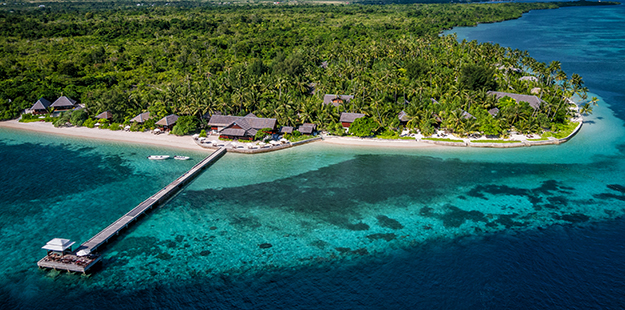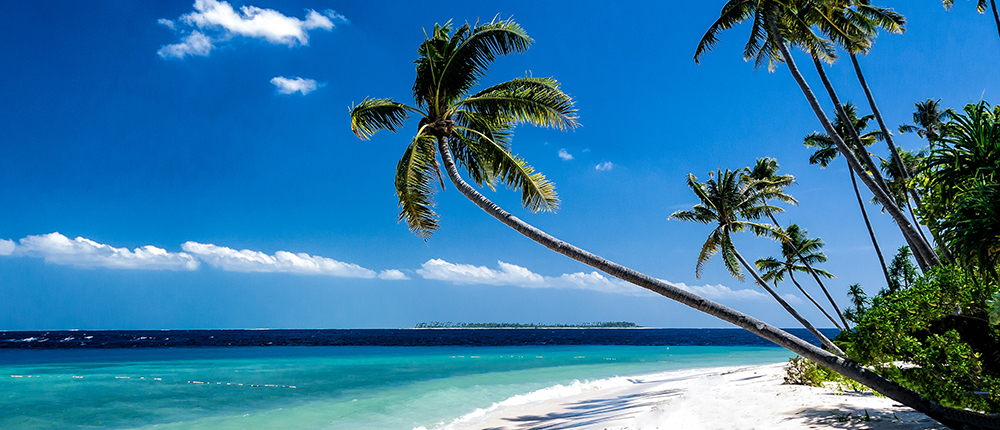Wakatobi Goes Solar
Wakatobi’s ongoing initiatives help create a clean, local power source
Wakatobi Resort is fortunate to be located in the sunniest part of Indonesia. Our guests certainly appreciate the abundance of sunshine, both when they are on the beach and when they see it filtering down through the clear waters to light up the coral reefs. And now, there’s another reason to love the sun while you are at Wakatobi because it will be providing much of the electrical power needed to maintain resort operations.
Going solar is seen as an environmental benefit, and in places such as Wakatobi, it’s also a practical solution. There are some 6,000 inhabited islands in Indonesia. This creates some unique challenges in terms of providing electrical service, as it’s often not possible to connect smaller islands such as the one on which Wakatobi is located to a central power grid. Instead, these outlying islands typically rely on community or individually owned diesel-powered generators. Converting to solar not only eliminates the emissions from diesel power, it removes the likelihood of a power failure due to mechanical breakdowns or delays in the delivery of fuels. Vigilant maintenance and logistics support have kept the resort largely immune from such concerns, but there’s certainly good reason to convert to solar power.

Wakatobi founder, Lorenz Mäder, worked with the government to establish the region’s first solar power plant on the adjacent island of Tomia. In 2018 a second installation was added at the village of Lamanggau. Photo by Wakatobi Resort
Wakatobi Resort’s efforts in bringing solar power to the region date back more than a dozen years. At that time, resort founder Lorenz Mäder convinced the District government to establish the region’s first solar power plant on the adjacent island of Tomia. This 75-kilowatt photovoltaic installation was relatively small in scope, but it was a start. Last year, a second solar installation was added on Tomia at the village of Lamanggau. Once again, Lorenz was instrumental in the process, as he coordinated with the village and we sponsored the flights that brought engineers to evaluate and install the photovoltaic facility, which was sponsored by an American foundation. The same contractor later installed two additional PV plants on Tomia, paid for by private Indonesian investors.

The village of Lamanggau now generates a full third of its electrical needs from solar-generated power and returns excess power generated during sunny days to the grid, further reducing the island’s use of fossil fuel-powered generators. Photo by Wakatobi Resort
Lorenz encouraged the Lamanggau village and PLN [the national power provider] to cooperate by connecting the solar installation to the neighboring island’s power grid. This enabled the village to sell any excess solar-generated power during the day, and in return, receive generator-produced power during the night. This arrangement is considered more cost-effective and efficient than adding the complexity and expense associated with the use of large battery banks to store excess energy.
Thanks in part to Lorenz’s ongoing work on bringing solar power to the Wakatobi Region, Tomia is currently the only island in Eastern Indonesia which has the capacity to be entirely powered by solar power during a sunny day, with photovoltaic plants that collectively produce a megawatt of electricity. This capacity represents a third of the island’s total 24-hours power requirements.
Wakatobi Resort is now connected to Tomia’s grid, which includes the solar power stations. The staff is working with the national utility company, PLN, to bring grid power to the resort grounds, where it will be tied into the existing power generation system. This solution will allow Wakatobi to take advantage of clean solar energy during the day, draw power from a central generation facility during the night, and still maintain the ability to operate autonomously at full power should the grid experience a temporary blackout. Work on this connection is currently underway.

The next time you visit Wakatobi, you’ll know that the same golden rays you’re basking in are further lowering the resort’s overall carbon footprint. Photo by Didi Lotze
So the next time you visit Wakatobi and stop to enjoy the warm sunshine, you will be pleased to know that those same golden rays are powering many of the resort’s necessities and luxuries. This solar connection will further lower the resort’s overall carbon footprint, which should give every guest a warm feeling.
Isn’t it time to enjoy the things that make Wakatobi Resort so special? Contact us at office@wakatobi.com or simply complete a quick trip inquiry at wakatobi.com, we’ll reach out to you right away.


